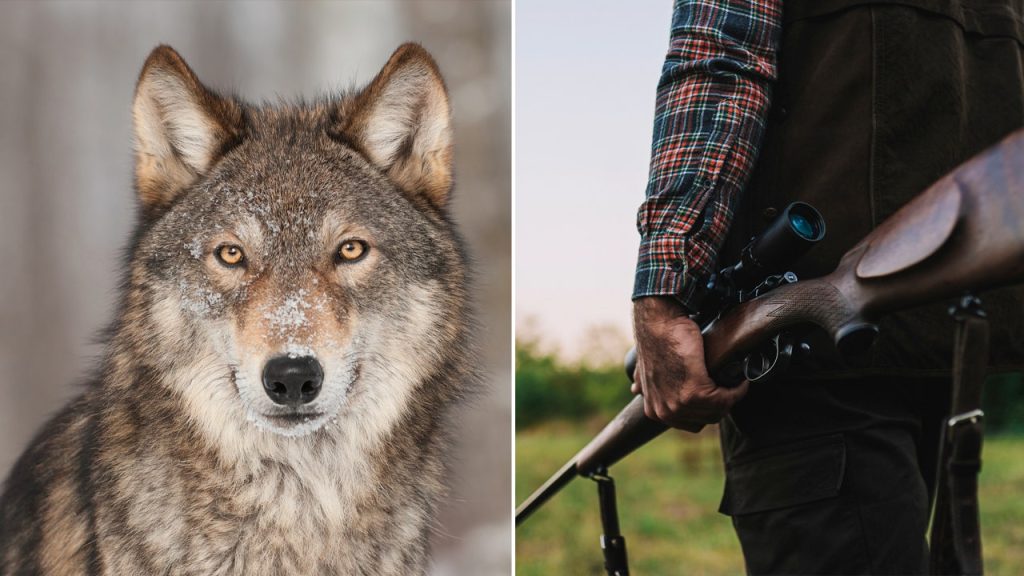The Michigan Department of Natural Resources (DNR) recently discovered that a hunter who believed he had killed a coyote in Calhoun County, Michigan’s southern Lower Peninsula, actually harvested a gray wolf. This rare find has prompted an investigation by the DNR, as there have not been many signs of wolf presence in the Lower Peninsula since the 1980s when the population was reestablished. The discovery was not brought to the DNR’s attention until the hunter’s kill started circulating on Facebook, where it was mistaken for a new world record coyote weighing 84 pounds. However, eastern coyotes typically only weigh between 25 to 40 pounds.
After a local biologist reached out to Brian Roell, a wildlife biologist and large carnivore specialist with the Michigan DNR, and showed him the photos of the animal, Roell immediately realized it was not a coyote. Further genetic testing confirmed that the animal was indeed a gray wolf. Despite the unusual find in Calhoun County, Roell does not believe that there is cause for concern. He explains that wolves and other large carnivores have the ability to move long distances, but there is not any suitable habitat for wolves in that area, so it is unlikely that there are more wolves present.
The hunter who harvested the wolf reported that he did so during a legal coyote hunt, and Roell sees no reason to believe the hunter was acting illegally. However, local law enforcement is investigating the incident. This is not the first time a wolf or wolf-like animal has been documented in the Lower Peninsula, with similar occurrences happening in 2004, 2011, 2014, and 2015. In the Upper Peninsula of Michigan, there is a stable population of 600 to 700 wolves, which are protected under the Endangered Species Act in 44 states, including Michigan.
The DNR has launched an investigation into how the gray wolf ended up in the southern Lower Peninsula. Roell emphasizes that the discovery does not necessarily mean there has been a population or range expansion for wolves in the area. He urges people not to jump to conclusions and assume there are more wolves in the region. While the presence of a gray wolf in Calhoun County is unusual, Roell does not believe it signifies a larger issue. He explains that wolves have the ability to move long distances, but there is not suitable habitat for them in that area, so the likelihood of more wolves appearing is low.
Despite the rarity of this discovery, Roell reassures the public that there is no need for concern. The DNR will continue to monitor the situation and investigate how the gray wolf made its way to the southern Lower Peninsula. With a stable wolf population in the Upper Peninsula, efforts will be made to protect the species as they are classified as endangered under the Endangered Species Act in Michigan and 44 other states. The DNR will work to ensure the safety and conservation of wolves in the region while continuing to study their movements and habitats.


